Plastic beehives
Plastic beehives are an alternative to traditional wooden beehives. They are made from durable plastics that withstand the elements. Plastic beehives offer several advantages over wooden beehives. They are lightweight and therefore easy to lift, simple to clean & maintain, and provide good insulation.
Another advantage of plastic beehives is that they sometimes do not need to be painted to extend their lifespan.
It is important in summer to ensure adequate ventilation (openings) to prevent the beehive from overheating. All in all, plastic beehives offer several advantages over traditional wooden hives. Want to buy a plastic beehive? As a beekeeper, it is important to carefully consider which option best suits your specific needs and circumstances.
Subcategories
-
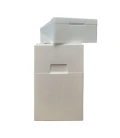
Plastic nuc boxes & 6-frame nucs
A 6-frame plastic nucleus hive (nuc box), also known as a six-frame nuc or swarm box, is a compact hive designed to house 6 brood box frames. These frames can be identical to those in a spaarkast or simplex hive. In this category you will find the plastic version of these nuc boxes; it is also [category id=109]available in wood[/category]. The plastic, often a type of polystyrene foam, provides excellent insulation, which is especially useful in small boxes. Thanks to this insulation, it is possible to overwinter a colony in the box, something that is more difficult in a wooden six-frame nuc. In addition, plastic boxes are lightweight and therefore easy to handle. Many beekeepers use both plastic and wooden 6-frame nucs. Many keep one in their car at all times, so they can quickly catch a swarm when they come across one.
When using a plastic six-frame nuc, we always recommend [category id=134]painting[/category] it. The reason is that this type of plastic, often EPS (polystyrene foam), can degrade under UV light. The paint protects against UV radiation and extends the service life of the nuc. In addition, painting lets you add a personal touch to the box, both for your own recognition and for the bees, helping them return to the right hive."
The six-frame nucs in simplex and spaarkast sizes are suitable for both Dutch and Belgian hive frames.
-
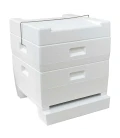
Segeberger simplex polystyrene beehives
The Segeberger simplex beehive is ideal for beekeepers who prefer not to do heavy lifting. Because the Segeberger hives are made of polystyrene (compressed polystyrene foam), they are much lighter than wooden beehives. The white, unpainted hives are easy to paint and provide good insulation, which in turn reduces feed consumption by the bees. These hives are manufactured in Germany under strict environmental standards. And, if properly taken to the recycling center, the material is also recyclable.
-
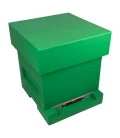
Spaarkast polystyrene beehives (BeeFun)
Polystyrene beehives from BeeFun are made from high-density foam. This delivers a robust hive that withstands knocks better than the well-known Segeberger. Another advantage is that they are even slightly lighter than Segeberger beehives. In addition, the hives offer extra ventilation options and entrance openings, which is ideal during a strong nectar flow.
-
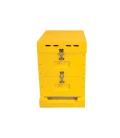
Langstroth polystyrene
Langstroth polystyrene. Here you will find all polystyrene Langstroth beehives and the parts for this hive in the Langstroth size. Suitable for hive frames with a 482 mm top bar.
-
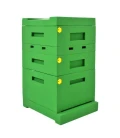
Dadant Blatt beehives
The Dadant beehive is a classic model named after its designer, Charles Dadant. Since 1870 the [category id=169]Dadant US beehive[/category] has been in use and has evolved into several variants, including the popular Dadant Blatt and Dadant US. Where [category id=3]wooden beehives[/category] were used in the past, in this category you’ll find Dadant Blatt beehives made of polystyrene. We’re happy to explain that if you want to [category id=182]buy a beehive[/category], you can choose this type of hive and why. The hive is designed for large hive frames with a 47 cm top bar, making it especially suitable for bee strains that build a large brood nest, such as Buckfast. A key advantage is that the entire brood nest fits into a single hive body, which simplifies work for beekeepers.
At Imkershop we offer various beehives for sale in the Dadant Blatt model. In this category you will find beehives with the Dadant Blatt frame size made of polystyrene and made by the manufacturer Lyson. The hives are available in hard polystyrene and can, if desired, be delivered pre-painted in various colors or unpainted. For these beehives you’ll find [category id=199]here[/category] all types of hive frames and beeswax foundation. There are also, in other categories, [category id=243]Nicot Dadant Blatt beehives[/category] in this frame size in wood and rigid plastic. -
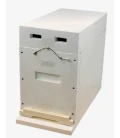
Zander polystyrene hives
The Zander beehive is also available in a plastic version. This is the Zander polystyrene beehive. This hive is also known as the Zanderbeute. This beehive is also [category id=237]available in wood; you can find it in the category[/category] wooden beehives. The hive consists of 2 or 3 removable sections: the upper section is the honey super and the lower section is the brood box (brood chamber). Both the brood boxes (brood chambers) and the honey supers are the same size. This is one of the innovations in the Zander beehive.
The advantage of the plastic Zander beehive
A plastic beehive handles moisture well and insulates effectively, which means the colony loses little heat. The plastic beehive must also be painted to protect against UV light, because plastic can degrade. For this you use [category id=134]special paint for plastic beehives[/category]. The plastic Zander beehive can also be supplied painted. It then comes ready to use. After the hive has been painted, you can house a colony in it. A plastic beehive requires little maintenance, just painting and occasional touch-ups. This is the only maintenance. You are therefore assured of a beehive that will last a long time. The hive is also super lightweight, making it easy to move.
Disadvantages of a plastic beehive
A plastic beehive also has drawbacks. Small dents can occur more easily when using the hive tool because the material is softer than wood. However, this also depends on how carefully the beekeeper handles the tool. These polystyrene Zander beehives are made from a high-density polystyrene, which keeps damage during use to a minimum. Want to read more about the history of the Zander beehive? Then take a look at the category [category id=237]wooden Zander beehives[/category].
-
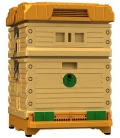
Apimaye beehives and spare parts
The Apimaye beehive was designed in Turkey by a team of beekeepers in collaboration with six universities. This hive makes caring for a colony exceptionally easy, with the goal of increasing honey production. Turkey is a major honey-producing country, and these hives are very popular there. The hives are made from plastic with antibacterial protection. Because Apimaye hives are double-walled, they provide excellent insulation, which benefits the colony and reduces sugar consumption. The hives are also highly innovative and packed with practical features.
-
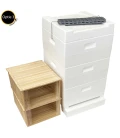
Segeberger German Normal polystyrene beehives
In this category you will find all our parts for the Segeberger German Normal beehive. This beehive is ideal for beekeepers who cannot or prefer not to lift heavy weights. These hives are made from polystyrene (expanded polystyrene foam) and are very easy to paint. The material makes the hives very light. Thanks to the thick walls, this hive provides excellent insulation. Good insulation in turn reduces feed consumption by the bees. Manufactured in Germany under strict environmental standards.
-
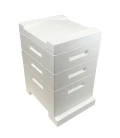
Frankenbeute Dadant US polystyrene beehives
Polystyrene beehives in the Frankenbeute Dadant US size. These hives are lightweight and supplied in white (unpainted).
-
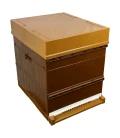
Nicot Dadant Blatt beehives
Nicot beehives are leading in modern beekeeping. Nicotplast was one of the first companies to introduce a [category id=290]plastic beehive[/category]. They offer innovative, durable and eco-friendly solutions for beekeepers. Made in France, each Nicot beehive is manufactured to the highest European standards, ensuring both durability and optimal conditions for your bee colonies. This article explores the features, benefits and technical specifications of Nicot beehives, with a focus on the popular Nicot Dadant-Blatt model. For these hives you will find all types of [category id=9]hive frames and beeswax foundation[/category] here.
-
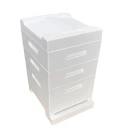
Frankenbeute Dadant Blatt polystyrene beehives
Polystyrene beehives in Frankenbeute Dadant Blatt size. These beehives are lightweight and supplied white (unpainted).
-
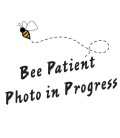
Dadant US bijenkasten
What types of plastic beehives are there?
We offer a wide range of plastic beehives. For example, we carry Segeberger simplex polystyrene beehives, as well as Dadant Blatt hives and the polystyrene BeeFun hive. To choose the right one, you should look at the differences. Dadant Blatt hives, for example, have large frames, ideal for bigger colonies and for working with just one brood box (brood chamber), but they are also heavy to lift. The Segeberger simplex is manufactured in Europe under strict environmental standards, but the box edges interlock when stacked, which can sometimes make them difficult to separate. The BeeFun hive, by contrast, has flat edges so the hive bodies can be slid apart easily when putting the boxes back on. They are also available pre-colored/painted. To make a truly good choice, consider what you as a beekeeper find most important. Each type of plastic hive has its own features and advantages.
What is the difference between plastic beehives and wooden beehives?
The main difference between a plastic hive and a wooden hive is, of course, the material they are made of. Plastic beehives are made of polystyrene (rigid foam) or high-grade PVC (plastic with a hollow or insulating core), while wooden beehives are made of wood, such as pine or red cedar or Thermowood/Premiumred®. Plastic hives offer somewhat better insulation and are often lighter to lift, whereas a wooden hive is closer to the bees’ natural nesting environment. Additionally, when a wooden hive is painted with a durable coating, it is a very environmentally friendly choice. The different materials offer various options for keeping bees. It is up to the beekeeper to decide what suits their situation.
Why choose a plastic beehive?
A plastic beehive offers several advantages over traditional wooden beehives. First, with less maintenance they often last longer and are therefore more durable. Plastic beehives are more resistant to weather. Additionally, plastic beehives require less maintenance. And moreover, plastic beehives are lightweight, easy to transport and handle. Something many beekeepers find very convenient.
Overall, a plastic beehive is easier to handle and a better-insulating alternative to wooden beehives.
